SIGGRAPH 2013: XYZN: Scale
Chair(s):
- Victoria Szabo
-
- Duke University
Art Papers Chair(s):
- Tad Hirsch
-
- University of Washington
Location:
Anaheim, California, United States of America
Dates:
July 21st-25th, 2013
Art Show Overview:
To see a World in a Grain of Sand And a Heaven in a Wild Flower, Hold Infinity in the palm of your hand And Eternity in an hour. —William Blake, Auguries of Innocence, 1803
This year’s Art Gallery is organized around the theme XYZN: Scale. The exhibition draws attention to a key critical affordance of computer-based authorship: the ability to iteratively scale our digital representations at will: in-out-up-down, back and forth, plus and minus. These core functions enable us to change size and location over time, and at different degrees of resolution.
The SIGGRAPH 2013 Art Gallery explores how artists take advantage of these capabilities in the construction of and/or the aesthetic effects created by their work. We sought projects that engage the artful transformation of these scaling techniques to explore an idea, tell a story, or create an experience in a novel and engaging way. Some of the projects featured this year, such as Four Mountains explore an idea at different orders of magnitude, complexity, and depth, producing aesthetically interesting objects along the way. Visualizing Federal Spending, for example, takes a 3D graphical approach to this notion, while Water Columns offers a physical object that expresses ambient information through a sculptural form. Other works, such as Traces: Plankton on the Move and Digiti Sonus, compare and contrast the inner resonances of seemingly disparate microcosmic and macrocosmic systems. Still others transpose sensory experiences across different affective domains, as in Cloud Pink, or in Rhumb Lines, with its eternally present waterscape. Some projects are the work of individual contributors, like the masterful Drawing Machine, while others, such as Shared Skies, are larger-scale collaborations. This Exquisite Forest combines constraint and openness to create an animated film. Still others, such as Spatial Hyperlink and Swarm Vision, rely on participation by gallery visitors and the conference itself to create meaning, relying on digital communication technologies to collapse space and time in order to create novel experiences.
Taken together, we feel the XYZN: Scale gallery helps realize Blake’s expansive poetic idea for the 21st century, and for a diverse set of artists, dreamers, scientists, and visionaries.
Victoria Szabo, Duke University
Art Show Jury:
- Sue Gollifer
-
- University of Brighton
- ISEA International Headquarters
- Anya Belkina
-
- Duke University
- Timothy J. Senior
- Mona Kasra
-
- University of Virginia
- Başak Şenova
-
- Koç University
Art Show Reviewers:
- Bonnie L Mitchell
-
- Bowling Green State University
Art Papers Jury:
- Brooke Singer
-
- State University of New York, Purchase
- Orkan Telhan
-
- University of Pennsylvania
- Teri Rueb
-
- State University of New York, Buffalo
- Marc Böhlen
-
- State University of New York, Buffalo
- Jonah Brucker-Cohen
-
- City University of New York
- Joey Berzowska
-
- Concordia University
- Marcus Bastos
-
- Pontifícia Universidade Católica de São Paulo
Exhibition Artworks:
-

Cloud Pink
[Hyunwoo Bang] [Yunsil Heo]
Categories: [Installation] -
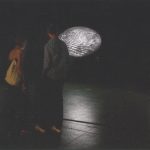
Digiti Sonus
[Byeong-jun Han] [Yoon Chung Han]
Categories: [Installation] -
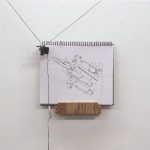
Drawing Machine
[Robert Twomey]
Categories: [3D & Sculpture] -
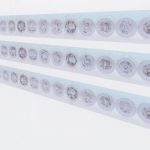
Expressive Maps
[Santiago V Lombeyda]
Categories: [2D & Wall-Hung] -
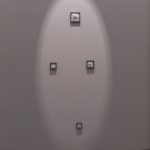
Four Mountains
[Mark J. Stock]
Categories: [2D & Wall-Hung] -
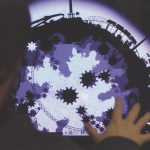
Long View
[Lee Cherry] [Patrick Fitzgerald]
Categories: [Interactive & Monitor-Based] -
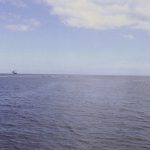
Rhumb Lines
[Barbara Mary Keating]
Categories: [Animation & Video] [Installation] -

Shared Skies (13 global skies)
[Kim V. Abeles]
Categories: [2D & Wall-Hung] -
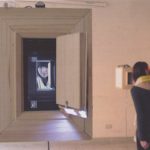
Spatial Hyperlink
[Wan-Ying Lai] [Shen-Guan Shih]
Categories: [Installation] -
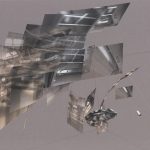
Swarm Vision
[Danny Bazo] [George Legrady]
Categories: [Installation] -

This Exquisite Forest
[Aaron Koblin]
Categories: [Interactive & Monitor-Based] -

Traces: Plankton on the Move
[Jerry Fishenden] [Elizabeth Harvey]
Categories: [Animation & Video] -
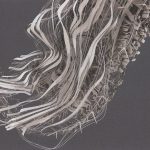
Visualizing Federal Spending
[Rebecca Ruige Xu] [Sean Hongsheng Zhai]
Categories: [3D & Sculpture] -

Water Columns
[Mark Weston]
Categories: [3D & Sculpture]
Exhibition Writings and Presentations:
-
Title:
Early History of French CG
Author(s):
Category: Paper
Abstract Summary:
This paper provides an historical summary of the emergence of computer graphics research and creation in France between 1970 and 1990, a period of innovation that transformed artistic practice and French visual media. The paper shows the role of these developments in the history of art, the evolution of digital technology, and the expansion of animation and visual effects in the film industry.
Title: Hybrid Basketry: Interweaving Digital Practice Within Contemporary Craft
Author(s):
Category: Paper
Abstract Summary:
Contemporary 3D printing and traditional craft rarely meet in the same creation. They tend to live in different worlds. In this paper, the author argues for merging these two distinct traditions. To that end, he developed hybrid basketry, a medium where 3D-printed structures are shaped to allow the growth and development of hand-woven patterns. While the 3D-printed plastic elements contribute the aesthetics of the digital curvatures and manifolds, the hand-woven reed, jute, and canvas fibers infuse the baskets with a unique organic appeal. The author discusses his motivation, describes the making process, and presents four hybrid baskets, integrating a deeper discussion on the place of craft and tradition within our contemporary approach to design and fabrication.
Title: KIMA - A Holographic Telepresence Environment Based on Cymatic Principles
Author(s):
Category: Paper
Abstract Summary:
KIMA is a holographic surround-sound installation that visualizes telepresence as both a phonetic and a synaesthetic phenomenon. The performance piece is based on the physical conditions of cymatics-the study of physically visible sound wave patterns. Two environments, a quad surround and a holographic interface, build the framework of a telematic experience that illustrates communication as wave forms while focusing on the relationship between sound and matter.
Title: Null By Morse: Historical Optical Communication to Smartphones
Author(s):
Category: Paper
Abstract Summary:
Null By Morse is an installation artwork that incorporates a military signaling lamp and smartphones. A series of Morse messages is transmitted automatically by the signal lamp. The messages are drawn from the history of Morse and telegraphy. A custom app for iPhone and Android uses the phone’s camera to identify the changing light levels of the lamp and the associated timings. The app then decodes the Morse and displays the message on the screen on top of the camera image. This paper discusses the artwork in relation to the following theoretical aspects: It contextualizes the position of smartphones in the history of optical communication. It proposes an approach to smartphones in media art that moves away from futurist perspectives whose fundamental approach is to seek to creatively exploit the latest features. Lastly, it discusses the interaction with the phone in the exhibition context in terms of slow technology.
Title: The Electric "Now Indigo Blue": Synthetic Color and Video Synthesis Circa 1969
Author(s):
Category: Paper
Abstract Summary:
Circa 1969, a few talented electrical engineers and pioneering video artists built video synthesizers capable of generating luminous and abstract psychedelic colors that many believed to be cosmic and revolutionary, and in many ways they were. Drawing on archival materials from Boston’s WGBH archives and New York’s Electronics Arts Intermix, this paper analyzes this early history in the work of electronics engineer Eric Siegel and Nam June Paik’s and Shuya Abe’s Paik/Abe Video Synthesizer, built at WGBH in 1969. The images produced from these devices were, as Siegel puts it, akin to a “psychic healing medium” used to create “mass cosmic consciousness, awakening higher levels of the mind, [and] bringing awareness of the soul.” While such radical and cosmic unions have ultimately failed, these unique color technologies nonetheless laid the foundation for colorism in the history of electronic
computer art.
Title: The Emergence and Growth of Evolutionary Art - 1980-1993
Author(s):
Category: Paper
Abstract Summary:
One of the most interesting-if frustrating-aspects of charting the history of computer art is trying to understand the intersections of specific technologies and artistic experimentation. It is rarely as clear-cut as a simple linear influence of one to the other, partly because artists are able to envision all kinds of possibilities that technology might enable them to realize in some kind of form, but as they do so, the technology is itself shaped, especially in terms of how it is perceived by others. Do artists find a way to give technologies an aesthetic outlet, or do some technologies possess-or facilitate-a characteristic aesthetic that finds its expression through specific artists? Certainly, in the history of computer art it would seem that particular aesthetics, technologies, and artists are closely intertwined in certain periods. This intertwining of art, technology, and ideas stolen from the natural world has never been so arguably merged as the period in the history of computer art from 1980 to 1993. We take as the defining start of this period the initial work of Mandelbrot on fractals that became known as the Mandelbrot set and led to his famous illustrated art-science book The Fractal Geometry of Nature. In 1993, this first highly creative period in evolutionary computer art came to an end with major publications by pioneers Karl Sims, Stephen Todd, and William Latham.
Title: Ut Pictura Poesis: Drawing into Space
Author(s):
Category: Paper
Abstract Summary:
In 1735, Leonard Euler presented a solution to the practical problem of whether a route could be plotted to cross each of seven bridges in Konigsberg once. His negative solution used the simplest of mark-making strategies to resolve a conceptual problem. Euler did not actually cross the town’s bridges, but used them to resolve questions of connectivity, after which diagrammatic representations can be seen as the restructuring of logical problems to allow for inductive reasoning, for fruitful application beyond theory. But what if such a working graphic has as its target something that is simply incomprehensible? What are the upper limits of the denotational logic of such diagrams? This paper presents a drawing-research project that tests the cognitive advantages of technical graphics by directly engaging with things that cannot be made easier to understand through their use.




